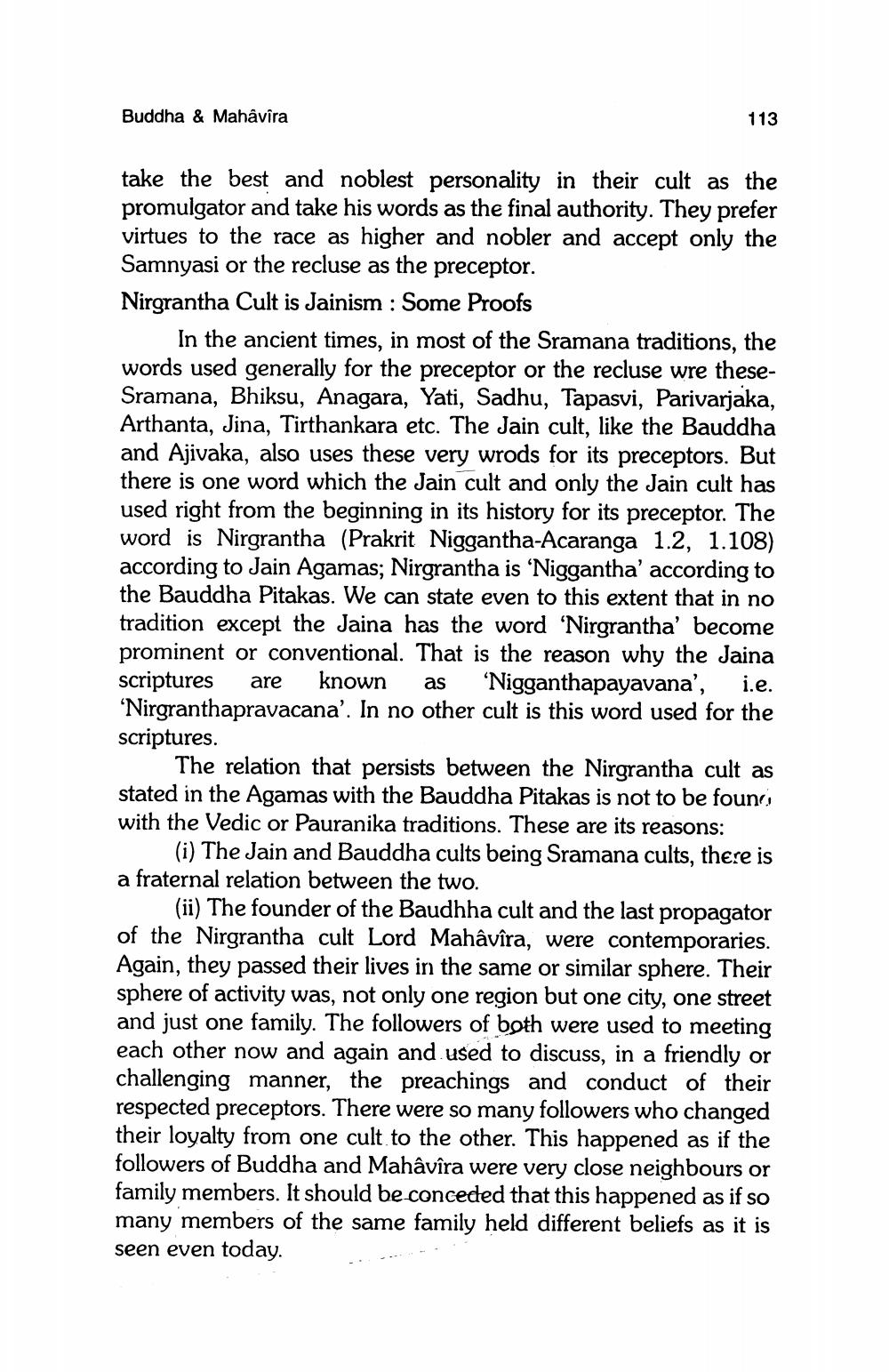________________
Buddha & Mahâvîra
113
take the best and noblest personality in their cult as the promulgator and take his words as the final authority. They prefer virtues to the race as higher and nobler and accept only the Samnyasi or the recluse as the preceptor.
Nirgrantha Cult is Jainism: Some Proofs
In the ancient times, in most of the Sramana traditions, the words used generally for the preceptor or the recluse wre theseSramana, Bhiksu, Anagara, Yati, Sadhu, Tapasvi, Parivarjaka, Arthanta, Jina, Tirthankara etc. The Jain cult, like the Bauddha and Ajivaka, also uses these very wrods for its preceptors. But there is one word which the Jain cult and only the Jain cult has used right from the beginning in its history for its preceptor. The word is Nirgrantha (Prakrit Niggantha-Acaranga 1.2, 1.108) according to Jain Agamas; Nirgrantha is 'Niggantha' according to the Bauddha Pitakas. We can state even to this extent that in no tradition except the Jaina has the word 'Nirgrantha' become prominent or conventional. That is the reason why the Jaina scriptures are known as 'Nigganthapayavana', i.e. 'Nirgranthapravacana'. In no other cult is this word used for the
scriptures.
The relation that persists between the Nirgrantha cult as stated in the Agamas with the Bauddha Pitakas is not to be foun with the Vedic or Pauranika traditions. These are its reasons:
(i) The Jain and Bauddha cults being Sramana cults, there is a fraternal relation between the two.
(ii) The founder of the Baudhha cult and the last propagator of the Nirgrantha cult Lord Mahâvîra, were contemporaries. Again, they passed their lives in the same or similar sphere. Their sphere of activity was, not only one region but one city, one street and just one family. The followers of both were used to meeting each other now and again and used to discuss, in a friendly or challenging manner, the preachings and conduct of their respected preceptors. There were so many followers who changed their loyalty from one cult to the other. This happened as if the followers of Buddha and Mahâvîra were very close neighbours or family members. It should be conceded that this happened as if so many members of the same family held different beliefs as it is seen even today.




